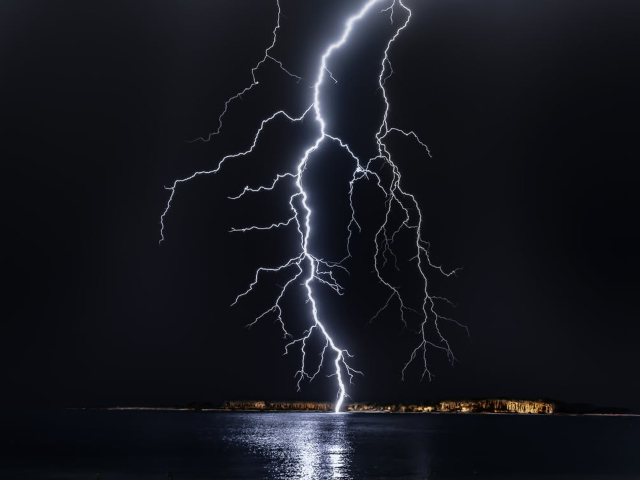
-
Today’s Fact: Lightning Strikes At Sea Follow A Pattern
06 Dec 2022 by Jasmine Stone in Berry & Donaldson, Business, Environment, Nature, Partners, South Africa, Weather
[imagesource: Pexels / Philippe Donn]
Boat skippers these days work hard for their money.
On the odd occasion when they get things wrong, it often becomes international news. I bet when you hear the words ‘Suez Canal’ now, your first thought is of the Ever Given becoming wedged and all of those glorious memes.
There’s also the fact that skippers spend weeks away from home on the open sea, and, if they work in shipping and logistics, they’re on vessels that are twice as likely to be struck by lightning.
Several years of work by researchers at the University of Washington and NASA, starting with a 2017 paper titled ‘Lightning Enhancement Over Major Oceanic Shipping Lanes’, has revealed that lightning strikes are twice as common along some of the world’s busiest shipping lanes, reports WIRED.
This compilation video from earlier this year gives you a pretty good idea of what it’s like to be on a cargo ship in the middle of a storm:
Add lightning into the mix and it’s even more terrifying.
So, why are shipping lanes more prone to lightning strikes? First, this is how lightning happens under normal circumstances:
Under normal conditions, microscopic water droplets in the air grab onto “cloud condensation nuclei,” which are aerosol particles bigger than 50 nanometers, like a bit of dust, or sulphur dioxide. When few particles are present, each one picks up more droplets, and they coalesce into relatively short clouds at low altitudes. Those make rain.
When a lot of aerosol particles are present, each one gets fewer droplets, and can float high enough into the atmosphere to freeze. In the resulting tall clouds, those bits of ice and slush run into each other and transfer electric charges.
The difference in charge creates an electric field and voila, you have lightning.
Cargo ships burn fuel which, when introduced into the atmosphere, contributes to the particles that create lightning. More particles mean more lightning.
The official term for this is “aerosol convective invigoration”. Some researchers also dubbed it “catalysing lightning”.
The increase in lightning along shipping lanes means an increased risk to cargo ships and the cargo on board, meaning it’s more important than ever to use a logistics and shipping service that offers marine freight insurance.
Berry & Donaldson, one of South Africa’s most extensive privately-owned clearing and forwarding agents, has the expertise and buying power to get the best possible rates from underwriters.
They’ll also handle the rest of your shipping needs, from route optimisation right through to currency cover, tariff determination, Customs regulations, and packaging requirements.
Come hell or high water, and even lightning, they’ll get your stuff where it needs to go.
[source:wired]
Latest News
-
Thai Woman Sentenced To Death For Murdering 14 Friends With Cyanide In Shocking Killing Spree
[imagesource: Sararat Rangsiwuthaporn] A woman in Thailand, dubbed 'Am Cyanide' by Thai...
-
René Magritte Painting Sells For Record R2.1 Billion At Auction
[imagesource:renemagritte.org] A René Magritte painting portraying an eerily lighted s...
-
Brave Rape Survivor Alison Botha Faces New Challenge After Brain Surgery
[imagesource: Alison Botha] Gqeberha rape survivor Alison Botha, a beacon of resilience...
-
Get Ready For The Mother of All Celebrations As MCQP Turns 30
[imagesource:mcqp/facebook] Clutch your pearls for South Africa’s favourite LGBTQIA+ ce...
-
The Iconic Good Hope Centre Is Set For Redevelopment
[imagesource:capetown.gov] The City of Cape Town’s Mayoral Committee has approved the...
-






























